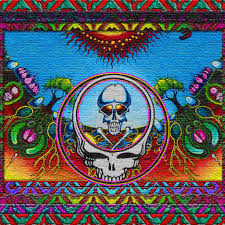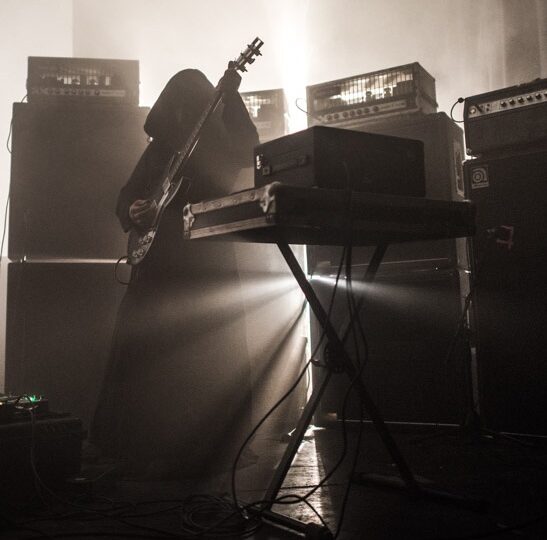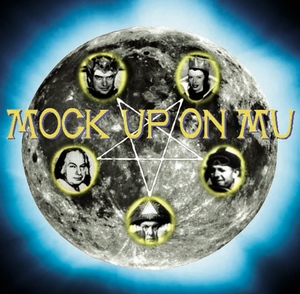
Sweet Chaos: The Grateful Dead’s American Adventure, by Carol Brightman.
For better or worse, my adolescent bodymind was permanently altered by its encounter with the Grateful Dead in the early 1980s. Murky days for the band to be sure, but the shows my teenage drug buddies and I caught throughout California, and especially at the dusty Ventura County fairgrounds, poured psychedelic kerosene onto the dying embers of the hippiedom we emulated. The Dead offered more than a hedonic escape hatch into a world of ritual song, wink-wink symbols, and patchouli-drenched ecstatic dance. They also handed us a fabulous passport into a misfit cultural history of America. They pried out the most spectral knots of wood from the floorboards of American folk, constructing a shaggy allegory of drifters, seers, and warf rats that seemed, at the time, as embodied in the Deadhead experience as it was imagined in the band’s elastic cowboy jams and magic-lantern ballads. One thing was for sure: this was the closest our belated souls would ever come to the blazing freakshow known as “the 60s.”
Carol Brightman’s Sweet Chaos addresses that peculiar sense of tradition, and attempts to answer, in a rather roundabout fashion, how and why, and in what ways exactly, the Grateful Dead kept their strange version of the counterculture alive. Best known for her biography of Mary McCarthy, which won the NBCC award, Brightman at first seems like an unlikely person to tackle the Dead. Turns out that she spent her salad days as a hardcore 60s radical, which places her on the politico side of the great Berkeley/San Francisco, activist/hippie tug of war. On top of that, her sister Candace was a member of the Grateful Dead “family”, running the lights for over two decades.
Brightman concentrates her extended historical essay on the 1960s and early 70s, and she begins, wisely, with LSD. Brightman argues that Ken Kesey’s famous fetes — their soundtrack provided by the Dead in their early guise of the Warlocks — provided the band with their fundamental musical tropes: indirection, communion, and the experience of chaos accepted and embraced. Over the years, this “magic” developed its own peculiar cultural and economic base. As the Dead grew into a touring force in the early 70s, the group consciously nurtured their growing army of fans through live radio, free shows, and communiques to budding “heads.” This in turn helped the group establish their unprecedented independence from the recording industry, an antiauthoritarian practice that lent the Dead an aura of, if not rebellion, than of visionary disengagement.
Brightman is only half taken in — in one passage, her experience of watching a 1993 Boston Garden show from both stage and lighting booth triggers a brilliant meditation on the great and terrible Oz. But for all her critical distance, she has definitely supped on the mystery. “Behind the Dead’s jingle-jangle rhythms–carny music, inflected with Gregorian tones–behind the skeleton who tips his hat, and the dancing bears,…the collective soul of the band, and its followers, was (and remains) a witching well of mystic yearnings.”
Sweet Chaos is by no means a definitive cultural history of America’s most Homeric rock band. Though Brightman evinces keen insight into Robert Hunter and Garcia’s ex-wife Mountain Girl, the musicians are less sharply drawn, and she failed to interview the burly wizard before he kicked. There are some good stories here, like the one where a teenage Bob Weir jumps a chain-link fence to chase after the Beatles’ limo, but lore geeks will have to wait for Blair Jackson’s monstrous Jerry Garcia bio, or, more tentatively, band flack Dennis McNally’s “authorized” history of Dead. Nor does she muster any good explanations for the mainstream success that followed 1987’s In the Dark. But by shifting her focus in an appropriately kaleidescopic manner from band members to roadies to managers to fans, and by lacing in plenty of personal memories alongside her interviews and highly literate readings, Brightman succeeds at placing the Grateful Dead in context. She recognizes their “kinship with the frontier ruffians of the 1850s, and the actors, musicians, and fandango dancers who crossed the plains to amuse them.” But she also drags them into an arena where they dared not tread: politics, and especially opposition to the Vietnam war.
As such, Sweet Chaos could be read as an extended meditation on the counterculture’s dueling ideological banjos of “Change the World!” versus “Change your Consciousness!” In a series of chapters dubbed “Their Subculture and Mine,” Brightman alternates between an account of the flowering of Dead fandom and her own experience in radical politics. Brightman draws forth the secret sympathy between radicals and freaks, arguing that the Vietnam war opened up precisely the kind of crack in consensus reality that Kesey described. But her real aim is to argue that the Dead’s psychedelic carnival sapped revolutionary energies, and that the band’s hostility to radical groups would “pan into gold when the doors of change began to slam shut.”
Though Brightman is right to attack the band for remaining silent when the DEA targeted Dead shows in the ’90s, her political concerns occasionally go overboard. Garcia was not, as she claims, “a scruffian defender of the status quo.” The Dead were hippie libertarians, not unlike their many digital fans, and Garcia’s personal passivity was intimately related to the egoless genius of his guitar playing and the nonautocratic structure of the Deadhead “family” enterprise. But Brightman thankfully devotes the bulk of her energies to unpacking the band’s Whitmanesque universe: their epic fondness for innuendo, their transit from defiance to communion, their lyric sensitivity to whatever subterranean American blues links child ballads and Howl. For all their musical rhetoric of rapture, the Dead made music that “spoke of the dailiness of experience, the experience of getting by…and [that] satisfied a longing for songs come from somewhere, that have a past, if only a sense of the past.” Perhaps that is also their psychedelic politics: to acquiesce, in the end, to the shapes and shortcomings of history.
A version of this piece appeared in The Village Voice




